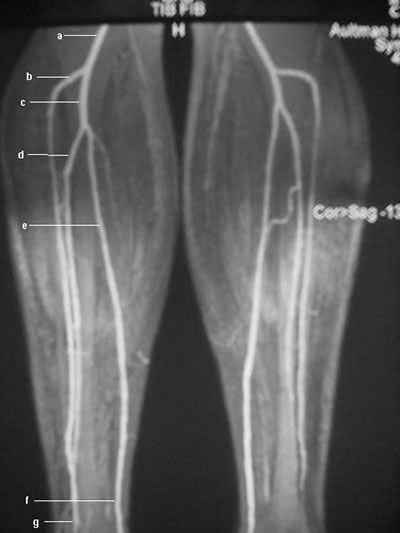
Magnetic resonance angiogram (MRA) obtained by using the bolus-chase technique shows the normal anatomy of the lower-extremity arterial vasculature, including the popliteal artery (a), the anterior tibial artery (b), the tibioperoneal trunk (c), the peroneal artery (d), and the posterior tibial artery (e).


No comments:
Post a Comment